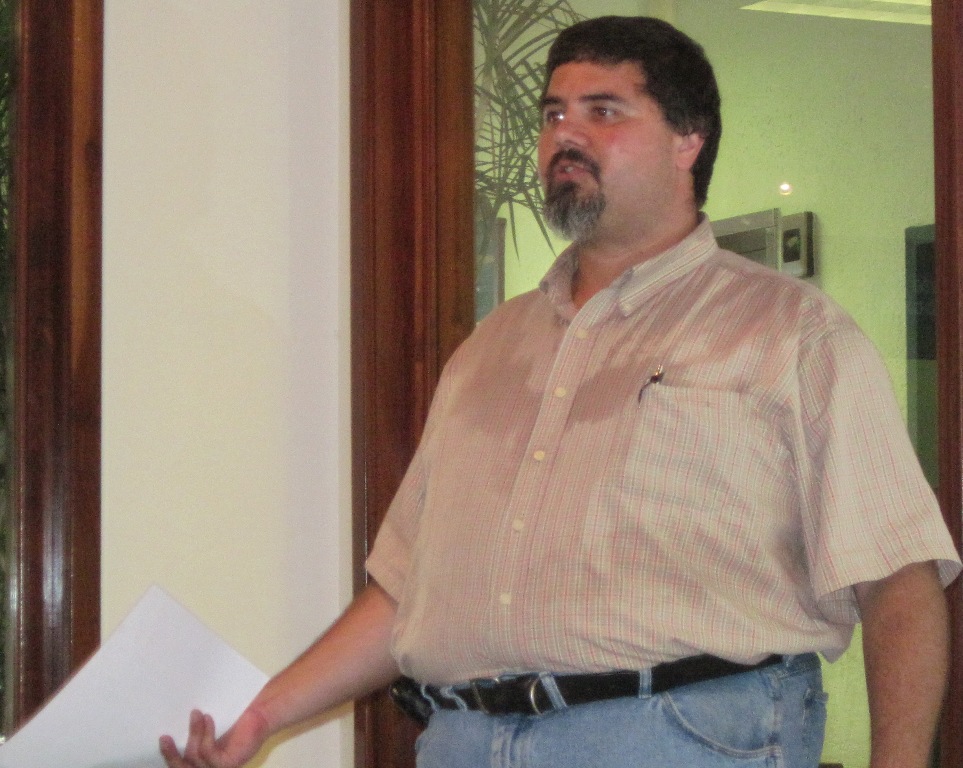
“Revegetate, revegetate, revegetate,” Mina told the dozen members gathered at the Marketplace Shopping Center for the meeting.
Planting shrubbery, plants and trees soak up water, he said.
And if you’re running the water from your washing machine and sink directly onto the ground, that practice is sending the phosphates in the soap downhill into the bay. To help with the problem, Mina suggested constructing what he termed a dry well.
“Dig a ditch and put some sand in,” he said, outlining how to make a dry well.
Continuing with his list of things homeowners can do to help the problem, Mina suggested that instead of raised flower beds, they install dropped flower beds below ground level to help collect and filter the water.
“Plant it with native plants,” he said.
Rain gardens are another possibility. Mina said to construct the garden adjacent to your driveway. Divert the water off the driveway using a trench drain with a grate, a speed bump or by sloping the driveway. This too will help keep the water on your property and out of the bay.
Mina took issue with the half-acre lot size that is standard for many subdivided areas of the steeply-sloped St. John. He said that it takes at least an acre, and preferably three acres, for a home’s sewage treatment system to have enough room to work properly.
He urged the IGBA members, who are mostly people in the construction industry, to change their way of thinking when it came to subdividing property.
“Think about resource and conservation first,” he said.
Developers need to evaluate whether there are steep slopes, drainage corridors and wetlands on the property before they start to subdivide. Lots need to be tailored to the characteristics of the property, not uniformly subdivided, he said.
Mina has worked for the Coral Bay Community Council since May 2009. He’s leaving that job June 26 to return to the states, but said he learned a lot in that time. His job provided frequent interaction with the Planning and Natural Resources Department as well as other departments and agencies.
“The will for enforcement is not there,” he said.
This happens because departments are understaffed, existing staff must deal with a huge amount of permit applications, and they often “don’t have the right person in the right place,” Mina said.
He also suggested that the local government force developers to post bonds before they begin projects to prevent projects like Sirenusa on St. John and others from sitting unfinished.
Stormwater Runoff Prevention Starts at Home, Says Engineer
Keeping our community informed is our top priority.
If you have a news tip to share, please call or text us at 340-228-8784.
If you have a news tip to share, please call or text us at 340-228-8784.
Support local + independent journalism in the U.S. Virgin Islands
Unlike many news organizations, we haven't put up a paywall – we want to keep our journalism as accessible as we can. Our independent journalism costs time, money and hard work to keep you informed, but we do it because we believe that it matters. We know that informed communities are empowered ones. If you appreciate our reporting and want to help make our future more secure, please consider donating.





